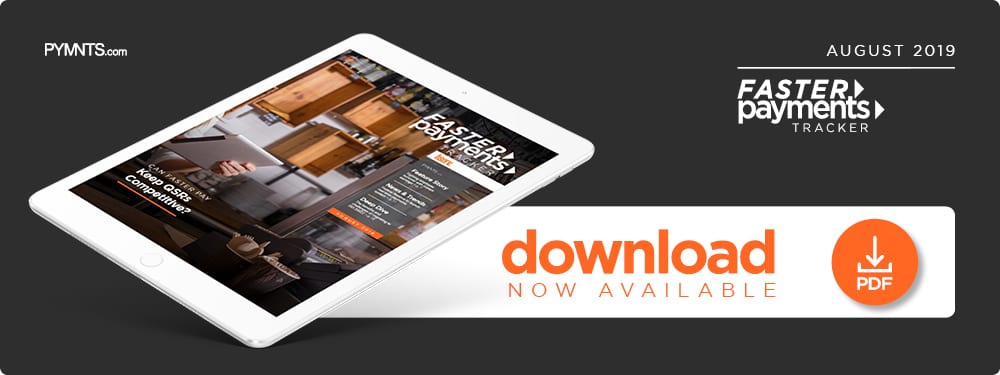Can Faster Pay Keep QSRs Competitive?

With a 132 percent annual turnover rate, at a cost of $2,000 per worker, employee retention is no small problem for quick-service restaurants (QSRs). On-demand access to payroll and tips could turn the tide, says Instant Financial Co-Founder and CEO Steve Barha. Here’s how real-time payments can create a new payroll reality for those hourly workers and the restaurants that employ them.
Consumers are not the only ones looking for quicker service in the QSR industry. Workers want to be paid quickly and employers are exploring options to combat high turnover rates. The industry experienced a 132 percent turnover rate for hourly workers and a 50 percent rate for managers in 2017. That dramatic churn adds up, with turnover costs estimated to cost approximately $1,900 per back-of-house hourly employee, $2,000 per front-of-house hourly worker and $14,000 for managers.
QSRs seeking to address this issue are looking at ways to make compensation and work environments more appealing, and an increasing number of financial solution providers are proposing that rapid access to tips and pay could be a major piece of this puzzle.
According to Steve Barha, founder and executive chair of Instant Financial, QSRs can see serious impacts from such rapid pay offerings.
“We are seeing a 25 percent reduction in annual employee turnover for employers who have introduced [Instant Financial’s] Instant Pay benefit,” Barha said. “This is based on a geographically diversified study of 25,000 QSR employees using Instant Pay across numerous QSR employers. Specifically, employees stay at their jobs two and a half to three times longer compared to employees who do not have Instant Pay available to them.”
The Demand for Earnings on Demand
Instant payments can be critical for meeting in-the-moment needs, and Instant Financial has observed that workers primarily use its solution to access an average of $28 at a time, four to five times per pay period. The company’s spend category data revealed that these funds are typically used for items like gas, groceries and pharmaceuticals.
“It’s not a lot of money, but it’s just enough,” Barha noted. “The intention for Instant is to allow people to make ends meet with their own money so they don’t have to borrow from a fellow employee, bug their managers for an advance or turn to other alternative financial services that charge them fees and interest.”
Employees who use Instant Financial’s solution receive earnings on prepaid Visa debit cards, which can then be used at point-of-sale (POS) offerings and at participating ATMs and Visa member banks. Workers can also use ACH rails to disburse the funds to their bank accounts, a process that takes one to two business days. A forthcoming Fiserv collaboration will allow for instant bank account transfers.
Instant Financial is also exploring other channels through which QSR workers prefer to be paid and is looking to establish connections to other rails. Many workers expect to be able to receive pay through the same digital payment channels they use as consumers, like PayPal and Zelle.
Driving Uptake
The QSR industry typically employs a younger crowd, with roughly 63 percent of surveyed 2019 restaurant workers between the ages of 16 and 25. Only about 6 percent were aged 41 or older. Younger workers tend to be comfortable with and interested in digital services like Venmo and Zelle, and are likely to popularize such technologies with older generations as they adopt instant earnings solutions, Barha pointed out.
“What the younger generation expects and makes normal, the older generation will eventually want,” he said. “We see exactly that with the Instant program – younger folks opt into Instant and then we see the follow-on from everyone else.”
These employees are likely to carry instant employee benefit expectations with them when they transition into new jobs or industries later in their careers, Barha added. Instant Financial serves additional industries by enabling not only wages and tips to be instantly disbursed, but also other earnings. Such services can help retailers quickly pay out commissions, and businesses that employ drivers can immediately provide mileage-based reimbursements, for example.
Instant earnings systems must be able to gather precise information about transactions, mileage and other factors to determine how much is due to each employee. Instant Financial’s platform was designed to better connect with these services and embed them into employers’ workflows.
“It’s important for us to communicate to the different types of record-keeping, payroll and disbursement systems in the diverse QSR employer ecosystem,” Barha said.
These trends stand to popularize new payroll norms as instant earnings providers expand their solutions’ capabilities to suit different industries’ pay particularities as these offerings see increased uptake in the services sector. A new pay approach in the QSR industry may ultimately shift the larger workforce.
